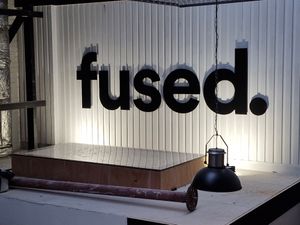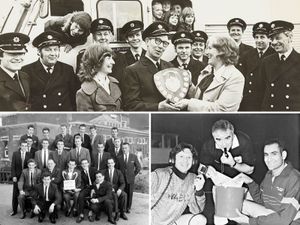Region's links with slave trade examined in controversial new report
A study by Historic England has delved into the region’s past links to slavery. We find out more about the report.
For centuries they have been celebrated as the driving forces behind the Industrial Revolution, the men who put the West Midlands at the forefront of the new age of technology that transformed the world.
But a controversial new report by Historic England looks at the lives of Matthew Boulton, James Watt and even Abraham Darby from a very different perspective – their links to the transatlantic slave trade.
The government-funded body has commissioned a 165-page study examining how some of Britain's best-loved tourist attractions and landmarks have historic links to slavery.
It also looks at the relationship between the great industrialists of the 18th and 19th centuries with the trade, and how, through acts of philanthropy, this was often invested in local communities.
The report, by historians Mary Wills and Madge Dresser, cites the patronage by prominent figures in British history, including Edward Colston, William Gladstone and Francis Drake as part of 'the money trail' linking a range of historical buildings to the wealth generated from slavery directly or through relatives.
But also included are some of the most prominent figures from the West Midlands.
It follows a Welsh Government review which noted the links between Powis Castle, Robert Clive and the slave trade.
Birmingham-based engineers Matthew Boulton and James Watt, who developed the modern steam engine, come under the spotlight over their business dealings.
And while Abraham Darby Snr, the Dudley-born ironmaster who founded the ironworks at Coalbrookdale, and his grandson Abraham Darby III, who built the Iron Bridge, are best known for their devout Quaker backgrounds, the report suggests they had family links to the slave trade in Bristol.
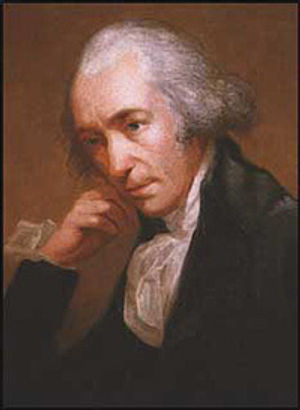
The first Earl of Dudley and the second Earl of Talbot (15th Earl of Shrewsbury) are also highlighted in the report.
Historic England, formerly part of English Heritage, says the information will be used to enrich its records and provide topics for more in depth research in the future.
But the study, which even audited chapels where slave profiteers and their relatives were buried, has reportedly angered government ministers who accused the body of 'putting down' Britain's past and sowing seeds of division.
The report describes how, at the end of the 18th century, the Midlands had become the centre of the metal trades.
"Some of the products were involved in the Atlantic slave economy," it says.
"The industrialist and progressive reformer Matthew Boulton developed business dealings with the Caribbean plantations from his Birmingham Soho factory.
"With James Watt, Boulton developed new steam engines that were sold to the sugar plantations, which used steam power to replace wind, water or horse power."
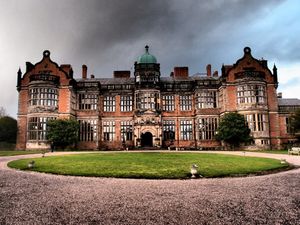
It said Birmingham's manufacturing history was 'interwoven with the story of empire and slavery.'
It also cites Shropshire's links to the trade in Welsh cloth to the Americas.
"Processes such as shearing were carried out over the border in Shrewsbury," it says.
"Much of the export to the Atlantic trade in Welsh cloth in the 18th century went by the way of London, Bristol and Liverpool.
"Shropshire coal and products from Shropshire ironmasters were also shipped to Bristol."
While there is no suggestion that either Abraham Darby Snr or his grandson had any direct involvement in slavery, the report did identify links between Coalbrookdale and the slave trade in Bristol.
Darby Snr lived in the city for a while before moving to Coalbrookdale, and took a loan from Thomas Goldney II who, in turn, had also invested in Woodes Rogers' trip to the Caribbean which involved the transportation and trade of slaves.
"The Goldney and Darby families from Bristol have associations with the ironworks in Coalbrookdale."
Hagley Hall, near Stourbridge, Witley Court near Stourport-on-Severn, Tong Castle near Albrighton and Alton Towers in Staffordshire all come under scrutiny in the report.
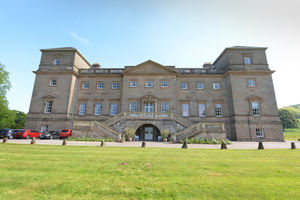
Ingestre Hall, near Stafford, Aston Hall, near Shifnal, and Lythwood Hall near Shrewsbury also feature.
However, some may question the relevance of some of the more tenuous links.
For example, Hagley Hall's links to the slave trade are said to relate entirely to relatives of its first owner, George Lyttleton MP. It points out that Lyttleton's grandfather Sir Charles Lyttleton was one of the first governors or Jamaica, and that George's brother William Henry Lyttleton was also appointed governor of Jamaica in 1760, the year the Palladian mansion was completed.
Witley Court and Gardens was purchased in 1837 by the trustees of William Ward, Earl of Dudley. The report said that while the Ward’s fortune came from the coal industry, he also inherited estates in Jamaica from his second cousin, John William Ward, who had been the first Earl of Dudley. William Ward engaged the architect Samuel Daukes to remodel the house in Italianate style and also commissioned William Andrews Nesfield to transform the gardens.
On the other hand, Lythwood Hall's links to slavery are much more clear-cut. The house at Bayston Hill was purchased by Liverpool slave trader Thomas Parr, who has a memorial in the grounds of the house.
Historic England says Aston Hall in Shifnal was owned by George Austin who owned a tobacco plantation owner in South Carolina.
"His daughter Eleanor married John Moultrie, an influential South Carolina planter, who came to England and settled at Aston Hall in the 1780s," it says.
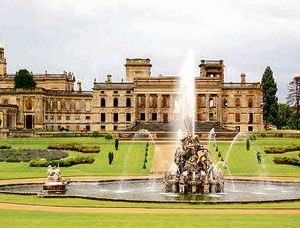
The report also identifies Tong Castle and its parklands for its links to the trade.
Tong Castle was built for George Durant in the 1760s, to replace the original castle which dated from the 12th century.
"Durant made his fortune in a variety of ways in the West Indies and built the house on his return," says the report. The house was demolished in 1954 and the M54 now runs through the site, but some of the Capability Brown gardens remain, including foundations of the castle, Church Pool and clumps of oak and beech trees.
Both Alton Towers and Ingestre Hall were owned by Charles Chetwyn-Talbot, 2nd Earl Talbot and 15th Earl of Shrewsbury, who was awarded compensation for two plantations in Jamaica during the abolition of the slave trade. He received recompense as the executor and trustee of his wife's brother-in-law Sir Rose Price. Talbot was responsible for creating the gardens which are now the centre of the amusement park. In the early 19th century he commissioned John Nash to rebuild the Jacobean red-brick mansion after it had been severely damaged by fire. Today it is owned by Sandwell Council and used as a residential arts centre and wedding venue.
The report also notes those who were involved in the abolition of slavery, including Joseph Sturge who has a statue at Five Ways, Edgbaston. Sturge organised the 1840 World Anti-Slavery Convention in London. Baptist minister and social reformer the Rev Thomas Swan, a vocal member of Birmingham Anti Slavery Society, is also mentioned.
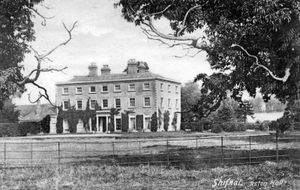
The Historic England report was commissioned in the wake of a series of protests last year, which saw the statue of slave trader Edward Colston in Bristol pulled down and thrown into the harbour.
But it was reported this week that ministers were 'frustrated' with public bodies including Historic England for allegedly taking partisan positions in a live debate on culture and history.
In September, Culture Secretary Oliver Dowden wrote to the department's 'arm's-length bodies', which include Historic England, reminding them not to engage in 'activism'.
Mr Dowden said Historic England should not 'erase' contentious parts of British history but instead 'seek to contextualise or reinterpret them in a way that enables the public to learn about them in their entirety'.
He said the organisation must remain 'impartial' in the debate.
"History is ridden with moral complexity," he wrote.
"Statues and other historical objects were created by generations with different perspectives and understandings of right and wrong.
"Some represent figures who have said or done things which we may find deeply offensive and would not defend today. But though we may now disagree with those who created them or who they represent, they play an important role in teaching us about our past, with all its faults.
"As set out in your management agreements, I would expect arm's-length bodies' approach to issues of contested heritage to be consistent with the Government's position.
"As publicly funded bodies, you should not be taking actions motivated by activism or politics. The significant support that you receive from the taxpayer is an acknowledgement of the important cultural role you play for the entire country.
"It is imperative that you continue to act impartially, in line with your publicly funded status, and not in a way that brings this into question."




